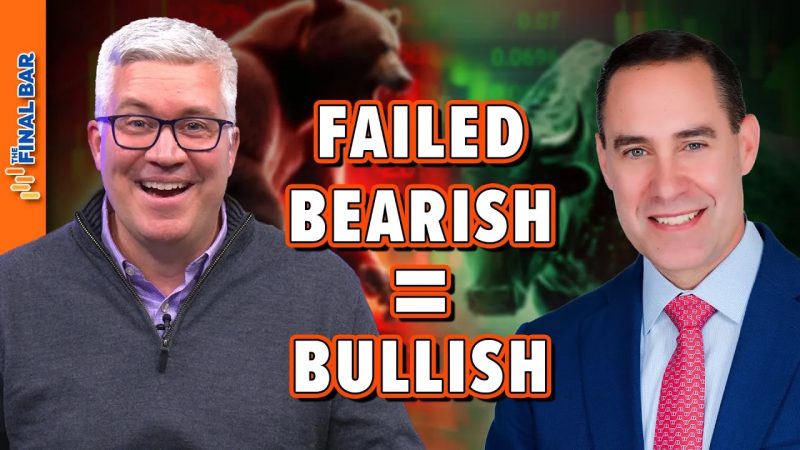Failed Bearish Patterns: An Unexpected Boon for S&P 500
In the high-stakes game of stock market investing, patterns play a pivotal role. Investors, brokers, and financial analysts meticulously monitor, analyze and interpret these patterns to predict future market movements. Among these patterns, bearish patterns generally signify an impending downtrend, potentially signaling investors to sell or short stocks. However, when bearish patterns fail to materialize as expected by market experts, it can prove to be a bullish signal for S&P 500. This might seem counterintuitive, but a closer look reveals the reasoning behind this intriguing phenomenon.
Failed bearish patterns occur when the anticipated bearish trend fails to materialize, disrupting the expected pattern. Instead of leading to a market downturn, the supposed bearish pattern stalls or reverses. In the context of the S&P 500 – an American stock market index comprising 500 of the largest companies listed on the New York Stock Exchange or NASDAQ – these failed bearish patterns can sometimes be an unpredicted catalyst for an upward swing.
To understand why this occurs, one must first understand the psychological component behind it. When a bearish pattern is identified, pessimism usually grips the investment community. Investors brace for a potential downturn, often initiating short-selling strategies or selling their shares in anticipation of a drop in prices. However, if the expected bear market doesn’t arrive and prices stabilize or even rise, investors who initially adopted a defensive stance often rush to re-enter the market or cover their short positions, driving up demand and subsequently, prices.
In terms of technical analysis, when a predicted bearish pattern proves incorrect, it can often be a sign of stronger-than-anticipated resilience within the market. It suggests that the underlying stocks that make up the S&P 500 have a robust support level, able to withstand selling pressure and bounce back. As such, when a bearish pattern fails, it can mean that there’s more bullish sentiment within the market than was initially realized. Alongside this, the failure of a bearish pattern can invalidate existing downtrends, breaking resistance levels and enabling new bullish trends to form, further boosting the S&P 500.
Take, for example, the Head and Shoulders pattern – a classic indicator of a bearish reversal. If this pattern fails to come to fruition, it often leads to an aggressive move in the opposite direction due to the sudden surge of buying pressure as traders cover their short positions. This unexpected switch can create a bullish pattern for the S&P 500, often jump-starting a period of market growth.
Moreover, failed bearish patterns may also imply a shortage of bearish traders or a surplus of bullish ones. This imbalance can lead to a supply-demand dynamic that favors price hikes, propelling the S&P 500 towards bullish trends.
It’s also worth noting that false signals, including failed bearish patterns, frequently lead to a potent trading strategy known as a ‘bear trap.’ Essentially, bear traps occur when apparent downward trends abruptly reverse, catching out those who’ve bet on a falling market. As these bearish investors scramble to exit their positions, they inadvertently stimulate a sharp uptrend. In these instances, the S&P 500 can reap substantial gains.
A keen analysis of these scenarios emphasizes the significance and potential benefits of failed bearish patterns for S&P 500. While standard interpretation of bearish patterns would prompt a defensively cautious approach, the failure of these patterns, in fact, opens up a new dimension of potential profit, and bullish trends often appear in the aftermath. Therefore, investors with a clear understanding of this inverse correlation can leverage such situations to their advantage and boost their investment returns.
Ahead of the curve, astute investors always keep an eye on the bigger picture and remain flexible, ready to revise their strategies based on market dynamics. So, next time a shadow of Bearish pattern looms ahead, remember – not all is as bleak as it seems. A lurking Bullish pattern may well be on the prowl, ready to offer an unexpected boon to the S&P 500.




